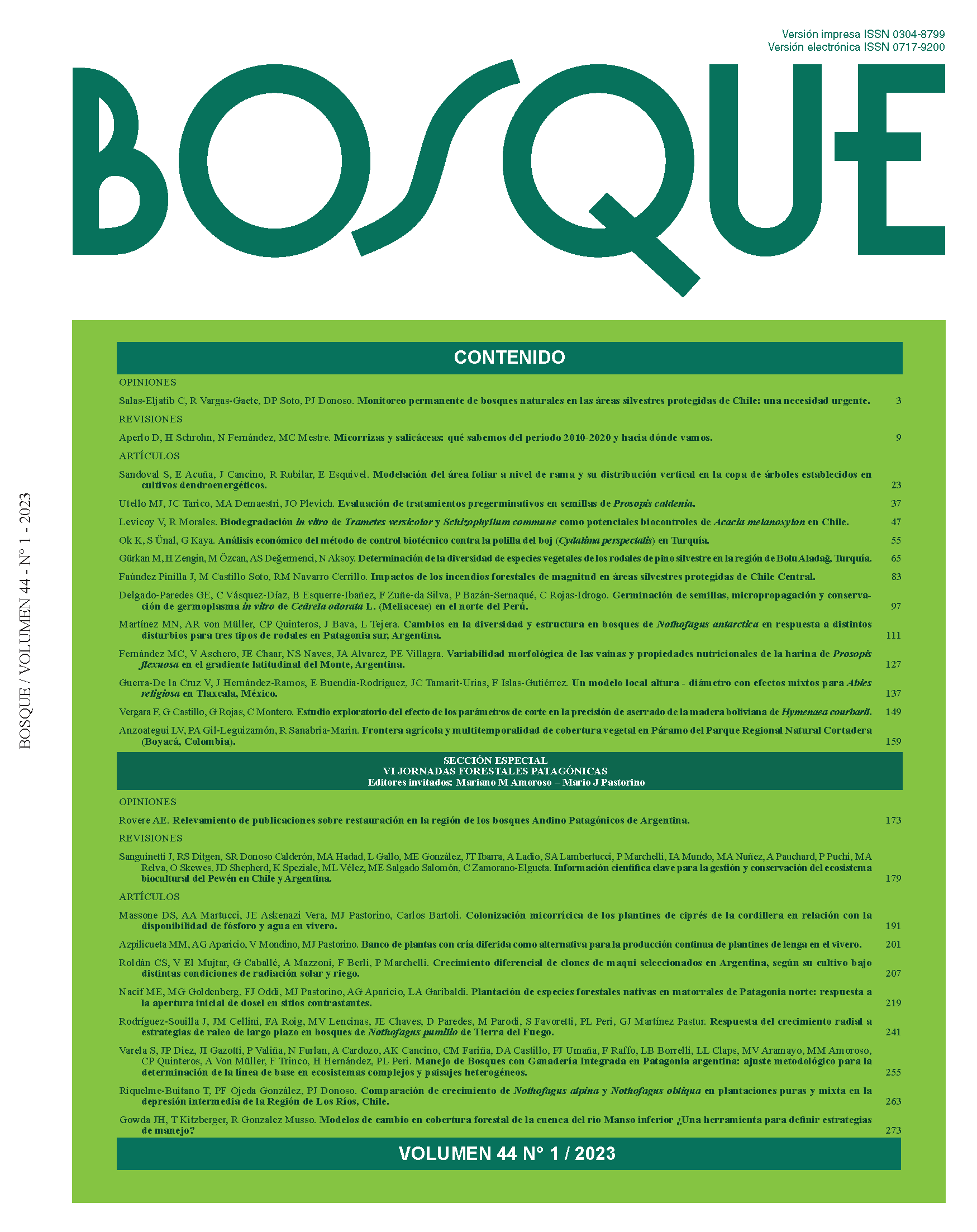Changes in diversity and structure in Nothofagus antarctica forests in response to different disturbances for three stand types in southern Patagonia, Argentina
Main Article Content
Abstract
In southern Patagonia, fire and domestic herbivory are the main disturbances affecting native forest dynamics. The effects of disturbances such as fire and livestock on the diversity and structure of plant communities depends on the intensity of these disturbances and the characteristics of the stand type. The overall objective of this study was to evaluate changes in forest diversity and structure under varying intensities of fire and livestock disturbances in Nothofagus antarctica forests in three different stand types. Two types of disturbances, fire and cattle, were evaluated at three different intensities; maximum disturbance, medium disturbance and no disturbance in high, medium and low stand types. Ecological and structural parameters were calculated for each experimental unit and their corresponding interactions. Diversity increased for the three stand types at maximum and medium disturbance intensities. Herbaceous cover increased for the three stand types at maximum and medium disturbance intensities. Shrub cover decreased in the high and medium stands due to the disturbances, but not in the lower stands. Understanding the responses of plant communities to fire and domestic livestock disturbances under different intensities and stand types is fundamental to predict the dynamics of native vegetation recovery and to guide sustainable management practices for each stand type.

